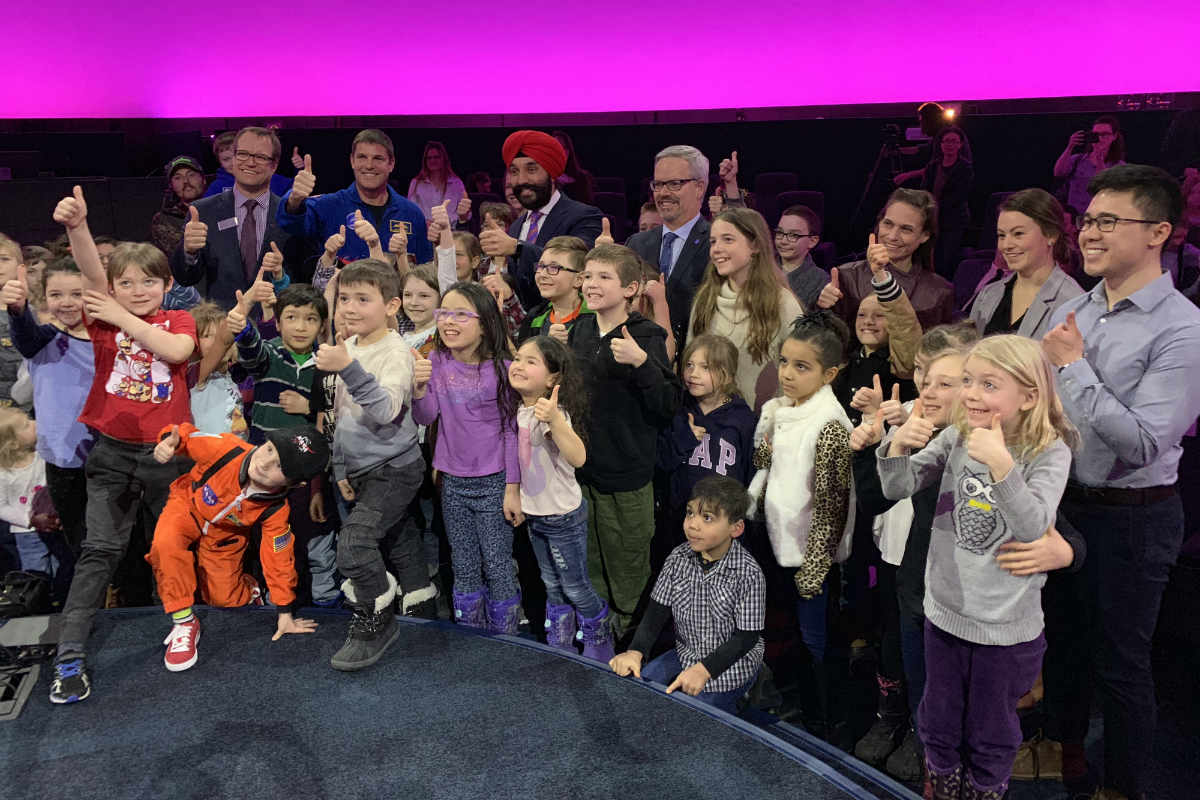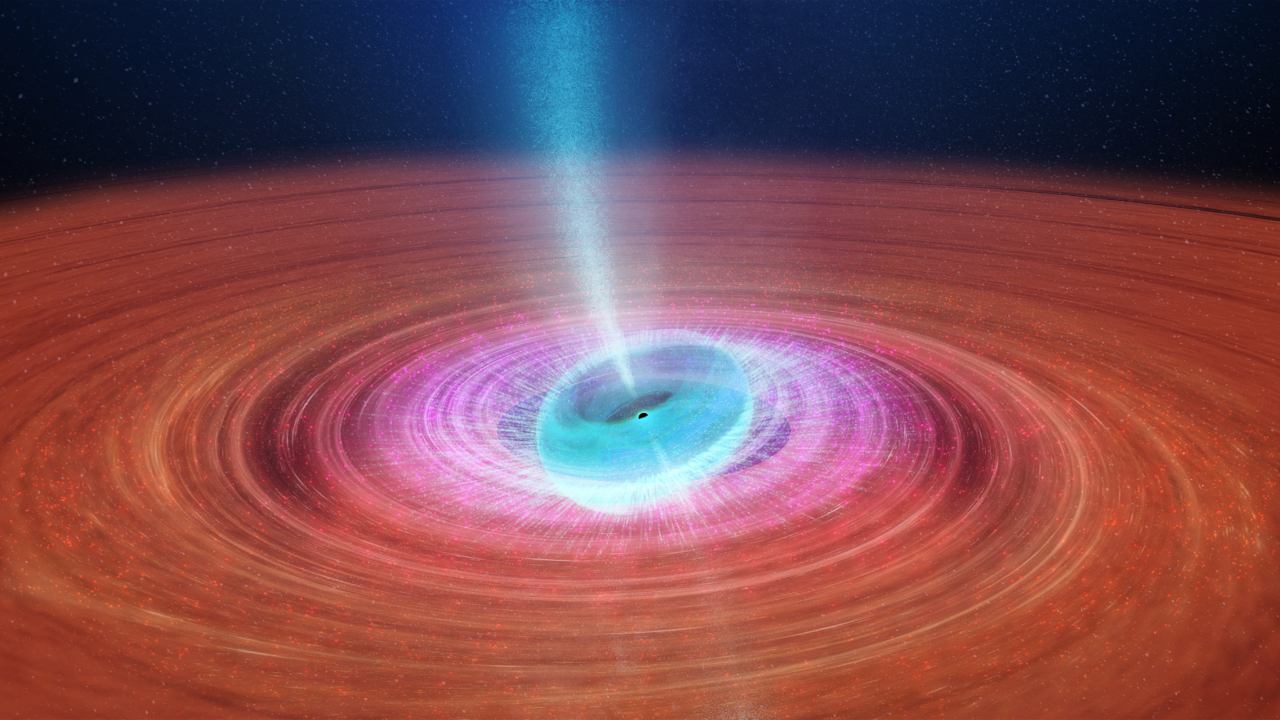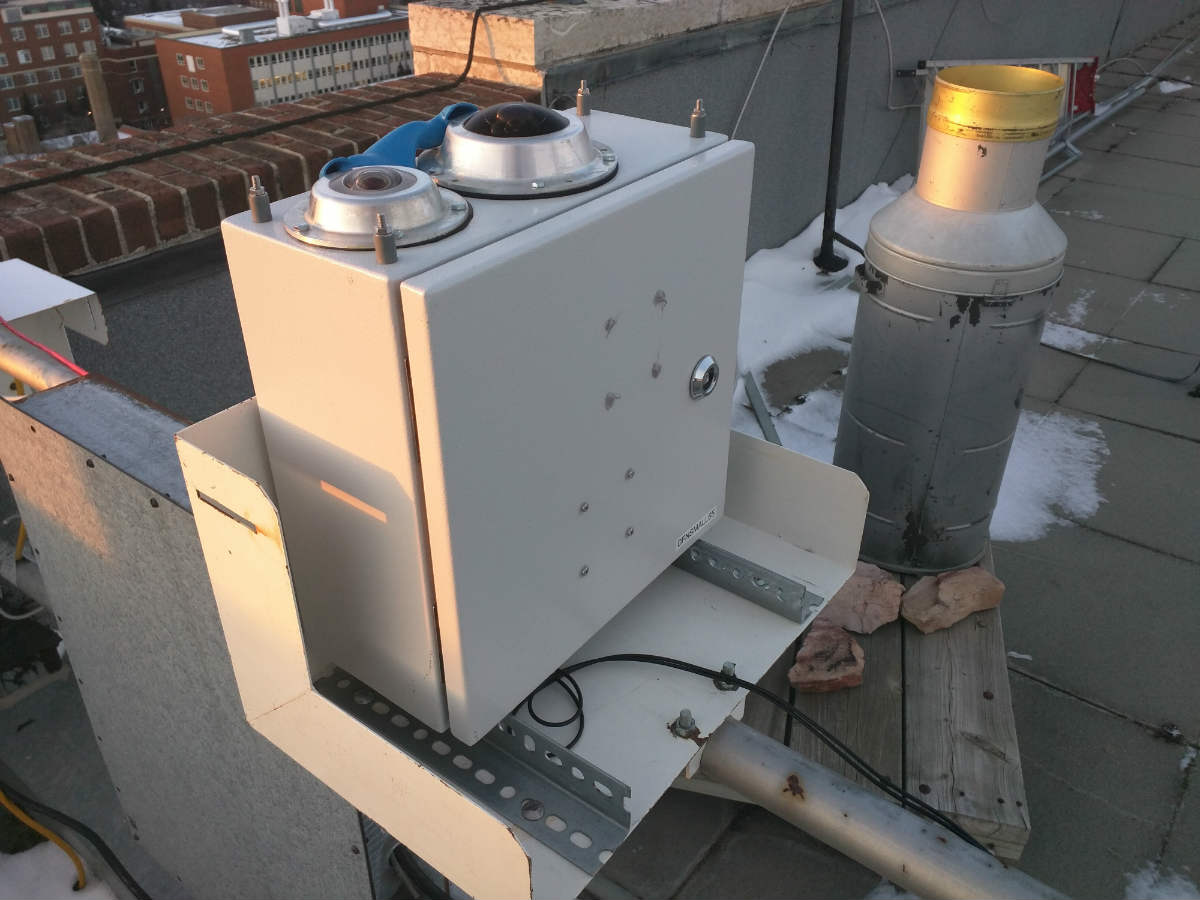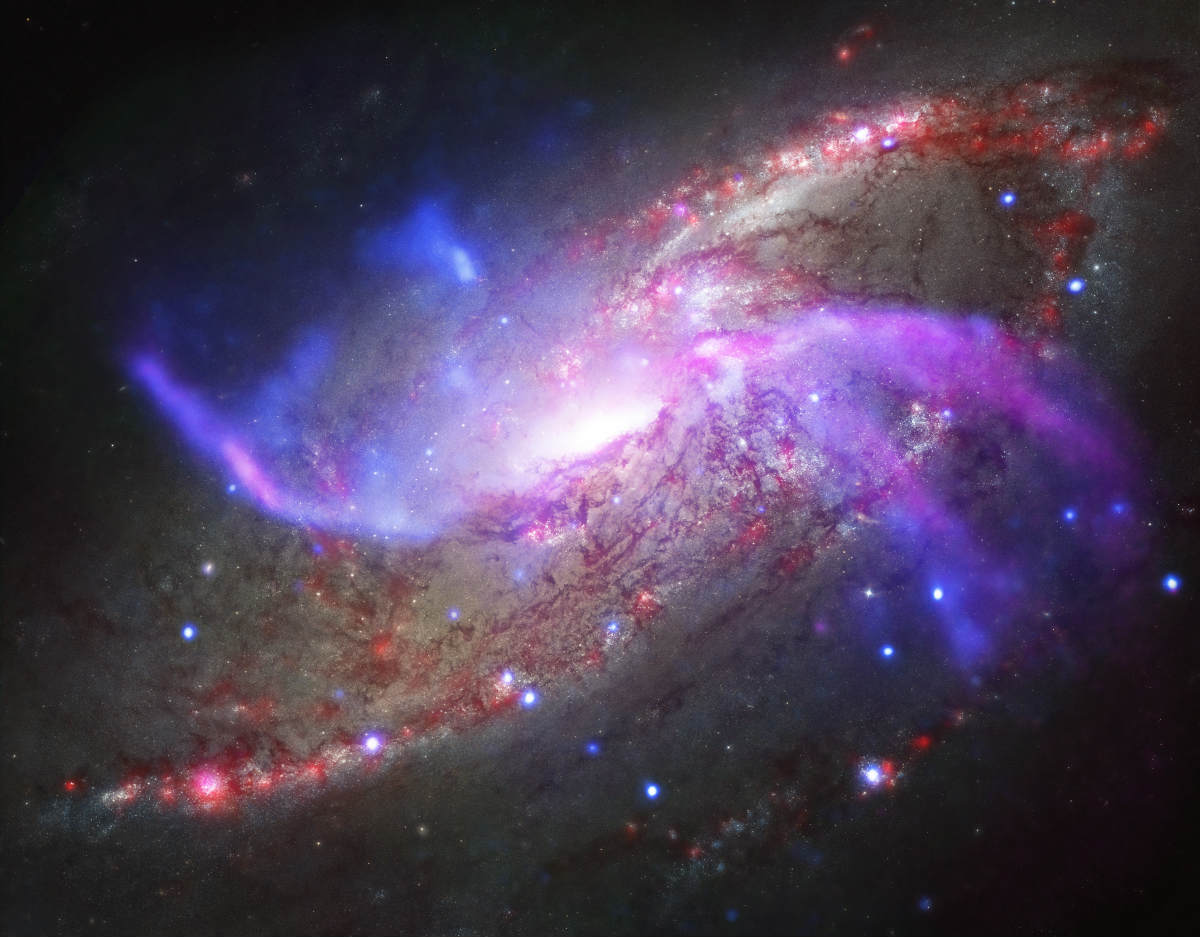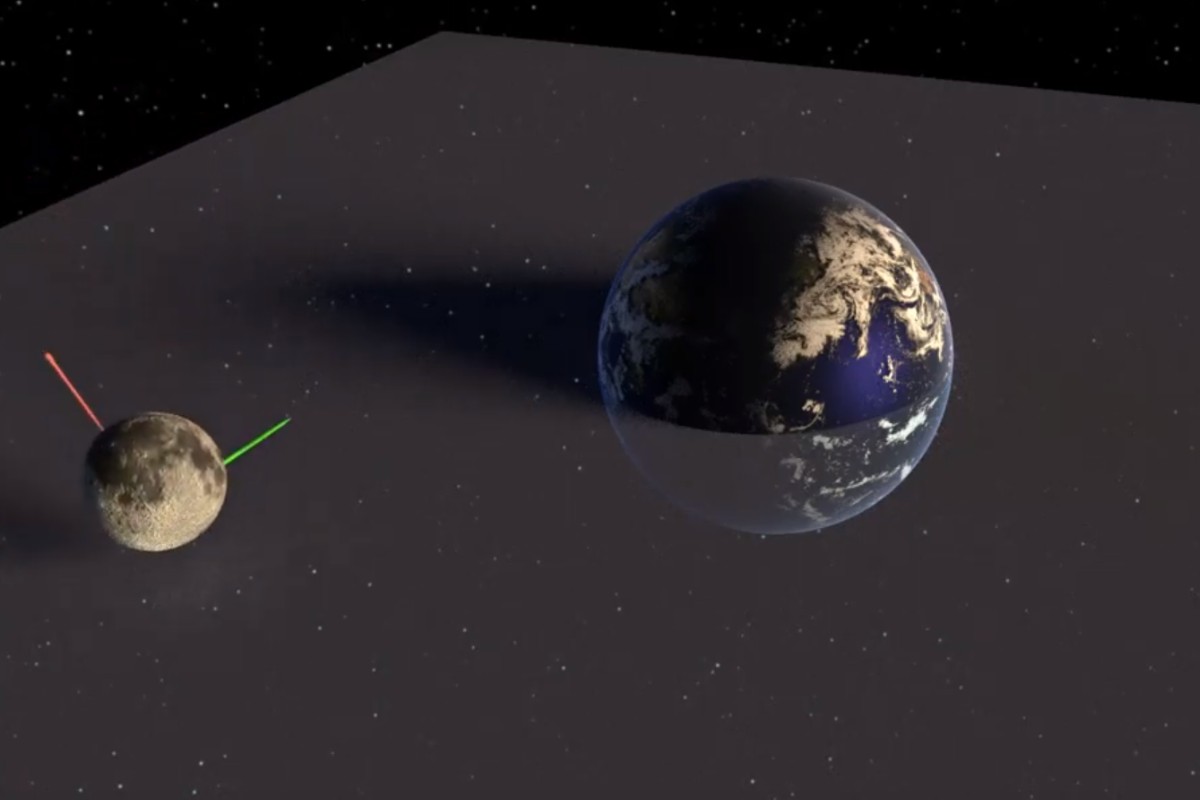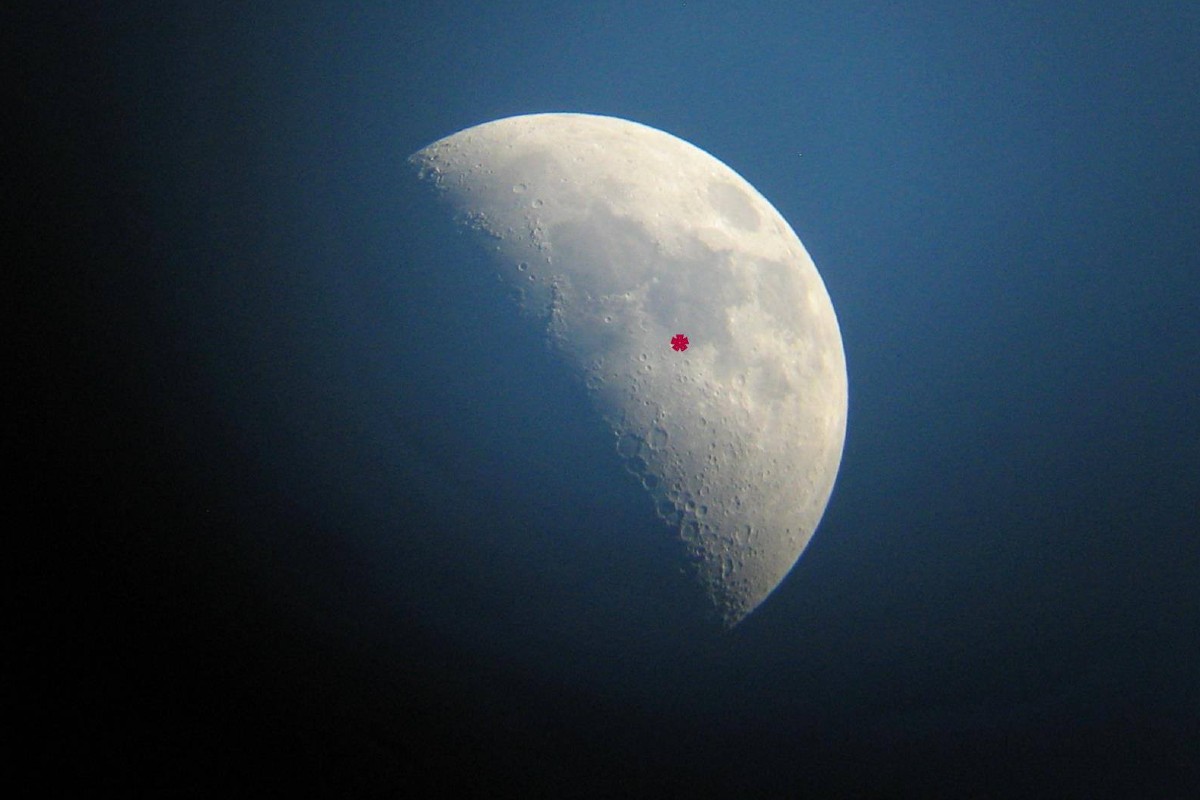
An image of the moon captured at the UAlberta Observatory, highlighting the landing site of the Apollo 11 mission in red. Photo credit: Sharon Morsink
On this day 50 years ago, the Apollo 11 mission made history as humanity took our first steps on the Moon. Today, we celebrate that landmark human achievement-and look at where space research is taking us now.
"The Apollo 11 mission really captured the imagination of people all over the world-and that spark has continued to inspire a half-century of space research," said Sharon Morsink, associate professor in the Department of Physics and director of the University of Alberta Astronomical Observatory. "It remains an important milestone as we continue to expand our knowledge about the universe today."
As the world celebrates this momentous anniversary of human achievement, join us as we explore some of the cutting-edge space research happening right here on the University of Alberta campus.
Canada is headed to the moon-and UAlberta is helping to pave the way there
Navdeep Bains, Minister of Innovation, Science and Economic Development, unveiled the federal government's national space strategy, Exploration, Imagination, Innovation: A New Space Strategy for Canada, at the Telus World of Science, Edmonton, March 6.
During the festivities that included sentiments from Canadian astronaut Jeremy Hansen, Bains echoed his government's Feb. 28 announcement of a $1.9-billion investment over 24 years for the next generation of smart, AI-powered space robotics for the U.S.-led Lunar Gateway-the first space station to orbit the moon.
Astronomers discover rapidly-changing jet from black hole
Of course, space is a big place-and there's plenty of research on campus that's looking beyond the moon. In April 2019 an international team of astronomers, including professor Gregory Sivakoff in the Department of Physics, discovered rapidly-swinging jets emitted from a black hole, a behaviour never seen before.
The results showed that jets from the black hole V404 Cygni, almost 8,000 light-years from Earth, wobble around on a much faster time scale than scientists have seen to-date-changing their orientation in a matter of hours.
Fireball network to aid search for meteorites in Western Canada
A bit closer to home-just overhead, in fact-the hunt for meteorites in Western Canada's skies is being cut to a fraction thanks to a new "fireball network," made up of state-of-the-art all-sky cameras that will allow for the automated detection of meteorite-dropping fireballs.
This advanced technology allows scientists to detect fireballs as they streak across the sky and triangulate the landing location of any rocks-meteorites-that make it to Earth's surface. Scientists can then collect samples from the ground more rapidly than ever before, resulting in better-preserved meteorite samples and improved scientific analysis.
"The faster we can get the rocks and bring them to our curation facility, the better the science we can do as a result," explained Chris Herd, professor in the Department of Earth and Atmospheric Sciences and curator of the University of Alberta Meteorite Collection, one of the top facilities for preserving and studying meteorites in the world.
Astro 101: Your biggest questions about black holes answered
Astro 101, a new online course by the University of Alberta, is educating students and the public on black holes-and busting some of the biggest myths orbiting these captivating subjects.
Headed by Sharon Morsink, associate professor in the Department of Physics and director of the University of Alberta Astronomical Observatory, the online course dives into the science behind black holes with educational animations and video.
Astro 101 is the one of the massive open online courses, or MOOCs, from the University of Alberta. Designed to be accessible for those without a physics background, the course is free for the public or can be taken as a credit course by UAlberta students.
Getting a glimpse inside the Moon
While we're celebrating the first footsteps taken on the Moon 50 years ago, if you find yourself curious about what's going on beneath the lunar surface, it turns out you're not alone.
Mathieu Dumberry, associate professor in the Department of Physics, and other UAlberta physicists have pieced together the first model of the Moon's rotational dynamics, taking into consideration its solid inner core. Their model helps to explain why, as seen from Earth, the Moon appears to wobble on its axis.
Want to know more about how the Faculty of Science is pushing the boundaries of space research and education? Check out the space science hub on our website to learn more.
